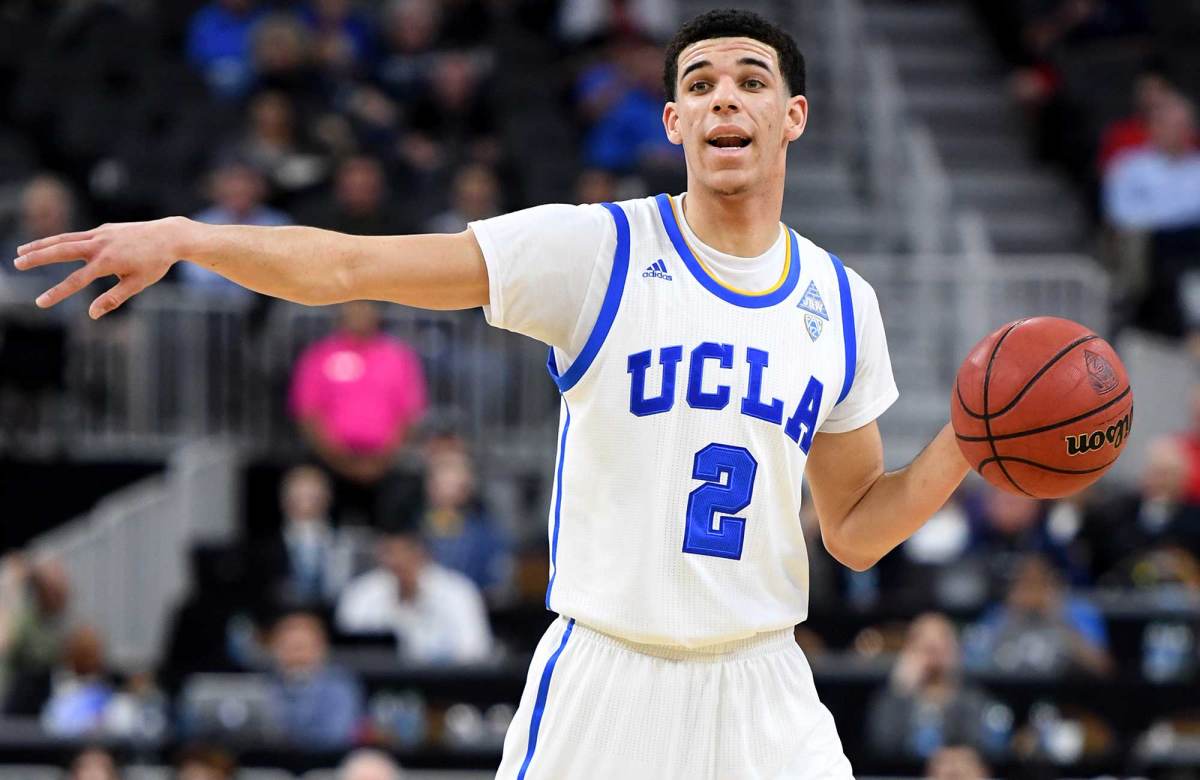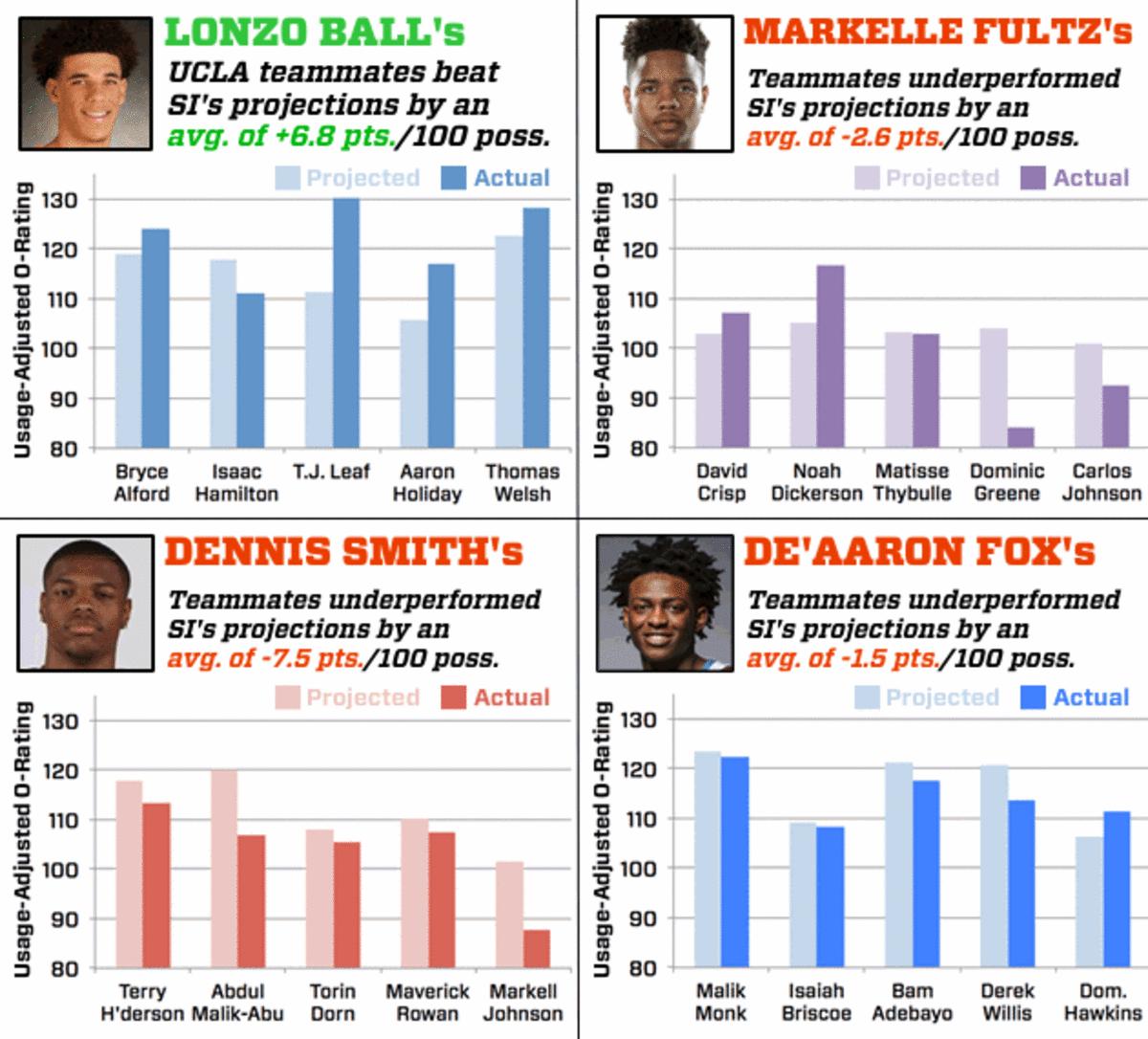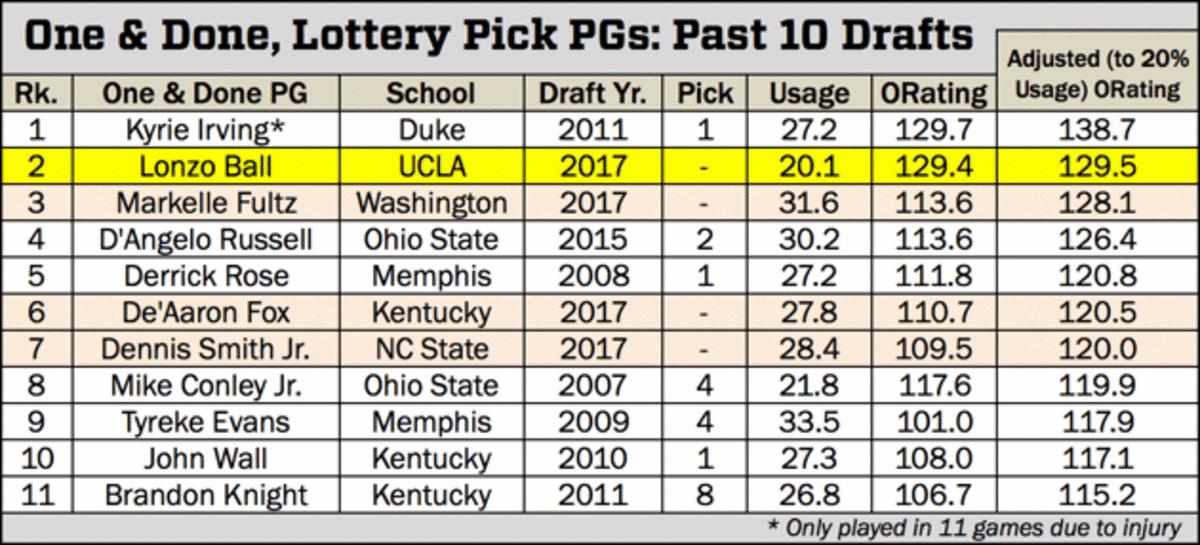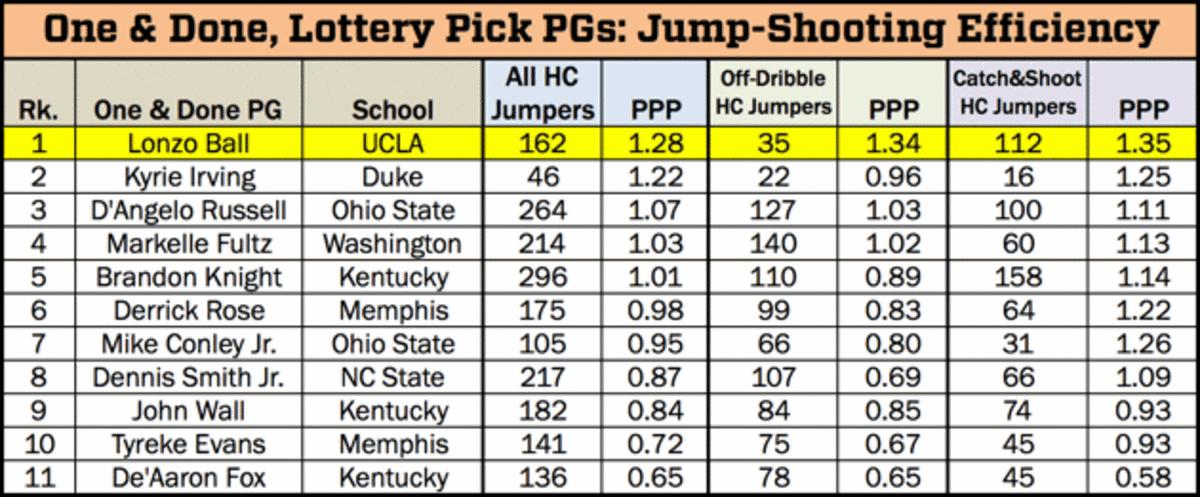The Case For: Lonzo Ball, The Draft's Best Guard

In the last 10 NBA drafts, just seven, one-and-done point guards have been selected in the lottery. The 2017 draft is almost certain to have four: Washington's Markelle Fultz, UCLA's Lonzo Ball, Kentucky's De'Aaron Fox and N.C. State's Dennis Smith Jr. There's no debating that this is the most loaded point-guard draft of the one-and-done era—the question is which point guard is the best prospect?
This is my three-part argument for Ball, whom I thought was the most captivating and advanced offensive freshman in college basketball since Duke's Kyrie Irving in 2011—even though Ball plays a completely different style of point guard than Irving does. Ball is pass-first, with brilliant vision and unconventional movements, and he had no leash at UCLA—in December, he said of Bruins coach Steve Alford, "He's not someone who's putting any restrictions on my game"—yet his natural instincts consistently led to efficient outcomes.

1. The Lonzo Effect Seems Real
Ball is the 2017 prospect whose case might be better made with his team's (or teammates') data rather than his own. The season before he arrived in Westwood, UCLA was ranked No. 51 in adjusted offensive efficiency on kenpom.com. With Ball, the Bruins finished at No. 2 in 2016-17. In October 2016, Ball's teammates T.J. Leaf, Ike Anigbogu and Thomas Welsh didn't appear in any 2017 internet mock drafts. Now, Leaf and Anigbogu are projected first-rounders, and Welsh earned one of the coveted invites to the combine in Chicago. Alford went from being on the hot seat after a 15-17 season to being comfortable after going 31-5. This was hardly all due to Lonzo, but was it really a coincidence that so many people around him outperformed expectations this season?
Another, more specific way of quantifying the Lonzo Effect is to look at how his teammates performed versus SI's preseason projections, and compare that with how Fultz's, Smith's and Fox's teammates performed versus projections. Part of the forecasting that Dan Hanner and myself have collaborated on for the past two preseasons at SI involves projecting efficiency on player-by-player level, based on past performance, recruiting rankings, and coaching factors. Ball's five teammates with the most playing time had usage-adjusted* offensive efficiency ratings of, on average, 6.8 points per 100 possessions better than projected. That alone is impressive, but it's especially impressive when compared with the teammates of Fultz, Smith and Fox, who, on average, performed below their offensive projections.
2017 NBA Mock Draft: Fultz To Celtics At No. 1?
Here's a complete comparison of SI-projected vs. actual offensive ratings for each point guard's top five teammates:

(*For the purposes of comparing offensive ratings with different usage rates, I normalized them all to 20%, using a formula proposed in 2008 by now-Rockets E.V.P. Eli Witus, that states that efficiency is expected to decrease by 1.25 points per 100 possessions for every 1% increase in usage.)
2. Ball's Own Offense Is Excellent, Too
Ball is unquestionably a pass-first player, as he had by far the lowest usage rate of the 2017 lottery point guards, and he led the nation in assists at 7.6 per game. But his individual, offensive rating (129.4) suggests that he also has an advanced grasp of how to score efficiently. Compare Ball's usage-adjusted ORating against the entire pool of lottery point guards in the one-and-done era, and he comes in second only to Irving—whose college stats are only from a sample of 11, non-conference games due to a foot injury.

There may be some flaws in comparing ORatings across different seasons of college hoops, as refereeing has evolved to facilitate more offense. (My guess is that Derrick Rose and John Wall would've been foul-drawing machines under the current rules.) But the general point here is that even among the elite point-guard prospects, Ball's individual offensive numbers stand out.
Winners And Losers From The NBA Draft Lottery
3. About That Jumper …
A few weeks ago, I wrote about Ryan Welty, a Division II freshman who shot 66.7% from long-range. Bill Stutz, the shooting coach who helped overhaul Welty's shot during high school—remaking it in the image of Klay Thompson's textbook—told me that Ball's highly unorthodox form "hurts my eyes."
No skills coach would ever teach a player to shoot like Ball does, but as Stutz acknowledged, "some guys master the art of shooting wrong." And while Ball's form (as well as his pops' ego) may be odious enough to get mocked by LeBron …
… that form is a distraction from the fact that Ball might actually be the best jump-shooter out of the entire crew of one-and-done, lottery pick point guards.
I pulled Synergy Sports Technology's freshman-year jump-shooting data for those point guards, and broke it into three categories in the chart below: all jump shots, jumpers off the dribble, and catch-and-shoots. (These are all halfcourt-only, as Synergy separates out transition.) In all three categories, Ball comes out as the most efficient, albeit with a small sample of off-the-dribble attempts:

Ball's statistical profile is that of an elite jump-shooter—for a point guard—who rarely messes around with mid-range attempts and has NBA range on his threes. Combine that with his peerless passing and its impact on his teammates, and you're looking at a prospect who didn't need a $495 sneaker to help separate himself as this draft's signature, offensive talent.
